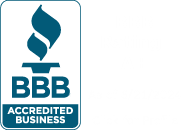Federal Tax Returns – Form 990
Staying Compliant- Federal Tax Returns – Form 990

Regardless of size or activity, every nonprofit organization must file a 990 tax return to the IRS every year. The due date depends on a few factors but is generally on or before May 15 of every year.
A nonprofit must report to the IRS, even during its partial initial year. Just as families can claim tax credits for babies born on December 31, nonprofits formed at any point during the year are required to file a federal tax return once the tax-exempt status is determined. These tax returns are known as form 990, and they come in multiple versions depending on the organization’s classification and revenue.
- 990-N: <$50,000 in revenue
- 990-EZ: <$200,000 in revenue
- 990: >$200,000 in revenue
- 990-PF: Private Foundations regardless of income
- 990-T: Organizations with unrelated business income
There are exceptions to the above types of 990s. For example, an organization in New York cannot file a 990-N regardless of its revenue. Consult with BryteBridge or your tax professional to ensure your organization files the correct tax form.
When an organization fails to file an IRS tax return, it faces significant fines. As much as $10,000 to $50,000 per a missed report, these fines alone can singlehandedly sink a nonprofit organization. The IRS return is the most critical compliance requirement for every nonprofit.
There are a few rare exceptions to filing 990s. Notably, places of worship are typically exempt from filing a 990. This exception, however, is not guaranteed and largely depends on the IRS designation letter. If you have questions about federal tax returns, please reach out to the specialists at BryteBridge.
Penalties For Not Filing
Failure to file a 990, or an extension by the due date, brings $20 per day fines until the 990 is filed ($10,000 or 5% of gross revenue maximum penalty per 990 owed). For nonprofit organizations earning more than $1,000,0000 in revenue, that fine becomes $100 per day the 990 is late ($50,000 maximum penalty per 990 due). Your organization must file its annual 990 on time.
If an organization fails to file its 990 for three consecutive years, the IRS will automatically revoke tax-exempt status. Revocation is a horrible situation for any nonprofit and means individual and corporate donations are no longer tax- deductible. Losing tax-deductible status alone can dry up all potential funding sources for a nonprofit. If that weren’t bad enough, having tax-exempt status revoked means the corporation is now liable for paying taxes.
Failure to file 990s is the most common reason organizations lose their status. Reinstatement is possible but costly and time-consuming. Reinstatement can also provide issues with Charity Registration renewals in the future. It is much less expensive to remain in annual compliance.
BryteBridge has a team of tax professionals capable of handling your organization’s reporting needs. Plus, we have affordable packages that combine your required 990 with filing requirements unique to your state, as described next.
One Size Does Not Fit All
There are multiple types of form 990. Choosing the correct one depends on many factors that largely depend on the organization’s revenue and location. Below, you’ll find an explanation of the different types of form 990. If you still have questions about which is suitable for your organization, BryteBridge specialists are ready to assist.
990-N
Organizations with less than $50,000 in gross revenue qualify to file Form 990-N. The IRS sometimes refers to 990-N as the e-Postcard.
As a Nonprofit consultant, BryteBridge often advises filing the 990-EZ Voluntary form (described below) instead of the 990-N to be transparent with the public. Your 990 is more than just a mandatory filing — it is the face of your organization and an opportunity to show the public that your organization is well organized. The 990-EZ itemizes financial data for public inspection, while the 990-N does not. Also, many states require a Form 990 filed along with annual solicitation renewals. These states will not accept the 990-N to meet this requirement. Further, major donors and foundation grantors often rely on a review of Form 990-EZ or 990 (described below) to make giving decisions.
Nonprofits in MA, NY, MI, and NH cannot file the 990-N, regardless of gross revenue.
990-EZ
Organizations with less than $200,000 in gross revenue, or assets under $500,000, qualify to file Form 990-EZ. The IRS also refers to 990-EZ as the short-form return.For example, an organization located in Georgia may have $35,000 in gross revenue, which means it qualifies for the 990-N filing. However, say the organization owns the build it conducts operations, and the building value is$300,000. Because of the significant asset owned by the origination, it must file the 990-EZ.
990 (Full Form)
To keep things confusing, the IRS Return of Organization Exempt From Income Tax is form 990. There is no additional designation. At BryteBridge, we refer to form 990 as the Full Form because it is the complete 990 tax return. Organizations with more than $200,000 in gross revenue or assets greater than $500,000 must file form 990 (full form).Using the same example as above, say the nonprofit’s gross revenues remain at $35,000, but the building reappraises for $750,000. While the organization’s revenue qualifies it to file the 990-N, its asset requires the 990 (Full Form). Organizations that otherwise qualify to file Form 990-N or 990-EZ may choose to file the Full Form.
990-PF (Private Foundations i.e Bill and Melinda Gates Foundation)
Private Foundations are a specific type of 501(c)(3) tax-exempt organization. All private foundations must file Form 990-PF instead of any other 990 verities regardless of revenue or assets.
990-T
When a nonprofit organization incurs unrelated business income greater than $1,000, it must file Form 990-T in addition to form 990 (Full Form). When an organization expects to pay UBIT, it must also complete quarterly tax estimations using form 990-W, even if the estimated tax is less than $500.
Generally, any organization with unrelated business income should seek the advice of a tax professional. The specialists at BryteBridge are ready to assist with your 990-T and UBIT questions.
When To File
The IRS requires every organization to file a tax return on or before the 15th day of the fifth month following the conclusion of an organization’s tax year.For example, an organization with a fiscal year ending on May 31 would need to file its 990 by October 15. Following a calendar year tax year, an organization must file form 990 on or before May 15 of every year.
An organization can extend its 990 due date for six months by filing Form 8868 with the IRS before the nonprofit’s original 990 due date.
Who Doesn’t Need To File
In a few infrequent circumstances, an organization may be exempt from filing 990 tax returns. These include religious organizations, government entities, qualified political organizations, and subordinate organizations listed in a parent organization’s group return. However, this list is not a blanket covering of organizations that meet these designations.For example, an organization might be faith-based but not specifically a religious organization. The IRS generally considers places of worship as religious organizations, though it is not guaranteed. The organization’s IRS Letter of Determination indicates if filing form 990 is required.Again, nonprofit organizations must file a federal 990 tax return to the IRS in almost every instance. Even organizations exempt from filing form 990 may choose to do so since they are an excellent means of accountability and record keeping.
Providing Public Records
Since nonprofit organizations operate for the benefit of the general public, their financial filings are considered public records. For more information about what records to keep and how long to make them available, please refer to the chapter on Record-Keeping later in this guide.
Brytebridge Nonprofit Solutions
7021 University Blvd. Winter Park, FL 32792
1-877-857-9002
Monday – Friday EST 9 AM – 7 PM
https://brytebridge.com/


